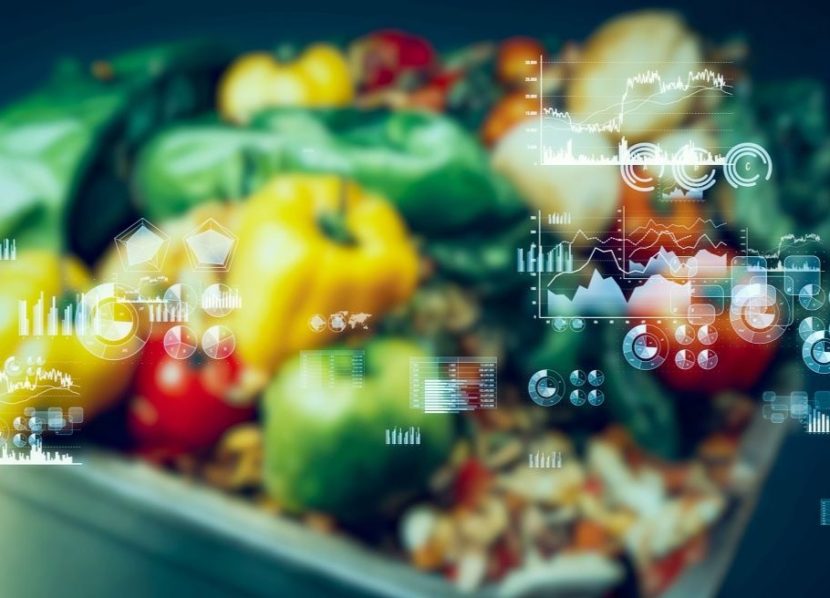How Automated Food Safety Testing Supports Sustainability Goals
By David Hatch
Food and beverage producers face growing pressure to demonstrate that their sustainability strategies are delivering tangible results. Key measures include reducing food loss and waste, implementing renewable energy strategies, and adopting regenerative farming practices to lower greenhouse gas (GHG) emissions, improve soil health, and foster biodiversity — all while driving operational efficiency.
Many food suppliers have come to understand that achieving sustainability goals can be difficult and involves multiple areas of the business to work in harmony. The ability to identify and measure sustainability performance is a complicated task, involving the ability to extract operational data that have not historically been utilized for these purposes.
Forward-thinking companies are adopting digital transformation in food safety to enhance sustainability, reducing waste and aligning with environmental goals.
Sustainability strategies often include initiatives such as:
- Environmental Stewardship – a targeted goal of reducing environmental impact by eliminating waste from farming and food production operations; and,
- Food Safety and Quality: a commitment to deliver high-quality food that is free of harmful contaminants.
New Approaches to Controlling Waste and Scrap
Forward-thinking companies have begun to adopt new sources of data and information to support their sustainability strategies. One example of this is the impact that a digitally transformed food safety testing program can have as an underlying means of improving operational performance and its impact on environmental stewardship and FSQA goals.
Globally, over a third of all food produced (around 2.5 billion tons) is lost or wasted each year. One-third of this occurs in the food production stage. Much of this is due to preventable food safety and quality issues.
The costs associated with creating a finished product vary among food sub-segments, but overall, they involve factors such as raw materials, facility energy, labor, packaging materials, and storage. All of these carry underlying sustainability impacts.
Every pound of finished product that is scrapped will require re-work to make up for lost order fulfillment for customers, which involves re-spending all or a portion of the resources listed above. Additionally, this results in the added burden of energy required to store affected food products for quarantine and testing purposes, as well as removing the scrapped goods in the form of waste management costs. All of this leads to increased GHG emissions to support the production, cooling, removal, and other energy-consuming means of meeting the original production yield targets.
Food suppliers have expressed a universally accepted business challenge, regardless of the food type produced: The later issues are found, the more waste is produced. It is, therefore, imperative that when issues are detected, the associated corrective actions accurately point to the affected food product and are completed as soon as possible to limit the amount of material that is scrapped.
Food suppliers generally lack rapid access to the information and visibility to relevant data required to reduce reaction times, which increases the cost of scrapping a finished product. Many environmental testing programs are managed via a weekly reporting process that involves collecting data from testing activity, aggregating it, analyzing it, and reporting on it on a weekly (or less frequent) basis. These information management tasks are often managed within a combination of paper and spreadsheet-based files.
At this pace, several days of production can be at risk of being scrapped when pathogen and bacterial contamination issues are finally confirmed during a weekly review process. The incremental visibility of relevant data needs to be accelerated to near real-time. But with hundreds or thousands of tests occurring during an ever-moving production schedule, how can food safety and production teams keep pace?
Digitized and automated testing workflow and analytics systems enable the reduction of time-to-information. An automated solution should enable the data to drive alerts and point to issues as they are discovered, rendering the weekly reporting and analysis cycle as a backup summarization system for long-term trending.
This is accomplished by defining rules that trigger the automated system to analyze diagnostic results data. Any time a value is discovered to be out of range or outside of the rules (such as a positive diagnostic finding for a pathogen or a bacterial count above acceptable ranges), the system automatically alerts stakeholders to the existence of such information. This enables near real-time reactions to occur and food products to be identified and quarantined before more production activity yields additional waste/scrap scenarios.
Early adopters of sustainability programs have learned the importance of relating sustainability goals to the performance improvement that company leadership and investors demand. Food safety issues, and the time it takes to identify and react to them, have the potential to cause operational disruption. Therefore, the adoption of digitally enabled testing automation and the resulting improvement of “time-to-information” can ultimately align and deliver operational goals and targets while also supporting sustainability goals.
About the Author
David Hatch is Vice President, Digital Solutions Marketing, at Neogen. He led the introduction of the food industry’s most advanced food safety automation software platform, now called Neogen Analytics. For over 30 years, Hatch has led organizations focused on data analytics technologies, market research, and consulting services. He has authored dozens of research studies, blogs, articles, and white papers covering a broad range of data analytics topics, including predictive analytics, performance management, workflow automation, and operational analytics.

-
 FeaturedRisk management
The Cost of a Breach: What a Cyberattack Could Mean for Food Safety Recalls
FeaturedRisk management
The Cost of a Breach: What a Cyberattack Could Mean for Food Safety Recalls
-
 FeaturedRisk management
Securing the Food Chain: How ISO/IEC 27001 Strengthens Cybersecurity
FeaturedRisk management
Securing the Food Chain: How ISO/IEC 27001 Strengthens Cybersecurity
-
 FeaturedRisk management
Revolutionizing Food Safety Training: Breaking Out of the “Check-the-Box” Mentality
FeaturedRisk management
Revolutionizing Food Safety Training: Breaking Out of the “Check-the-Box” Mentality
-
 GFSI Standards
GFSI 2025: Building Trust, Tech-Forward Solutions, and Global Unity in Food Safety
GFSI Standards
GFSI 2025: Building Trust, Tech-Forward Solutions, and Global Unity in Food Safety
-
 FeaturedFood Safety
Integrated Pest Management: Strategies to Protect Your Brand’s Reputation
FeaturedFood Safety
Integrated Pest Management: Strategies to Protect Your Brand’s Reputation
-
 FeaturedFood Safety Culture & Training
No Open Door Policy: Challenges That Impact Pest Control in Food Processing Plants
FeaturedFood Safety Culture & Training
No Open Door Policy: Challenges That Impact Pest Control in Food Processing Plants



